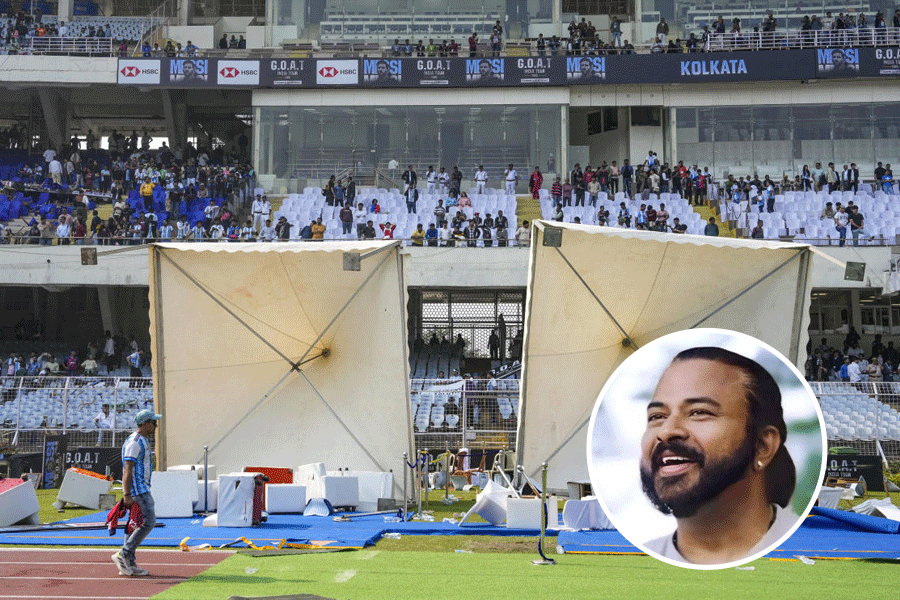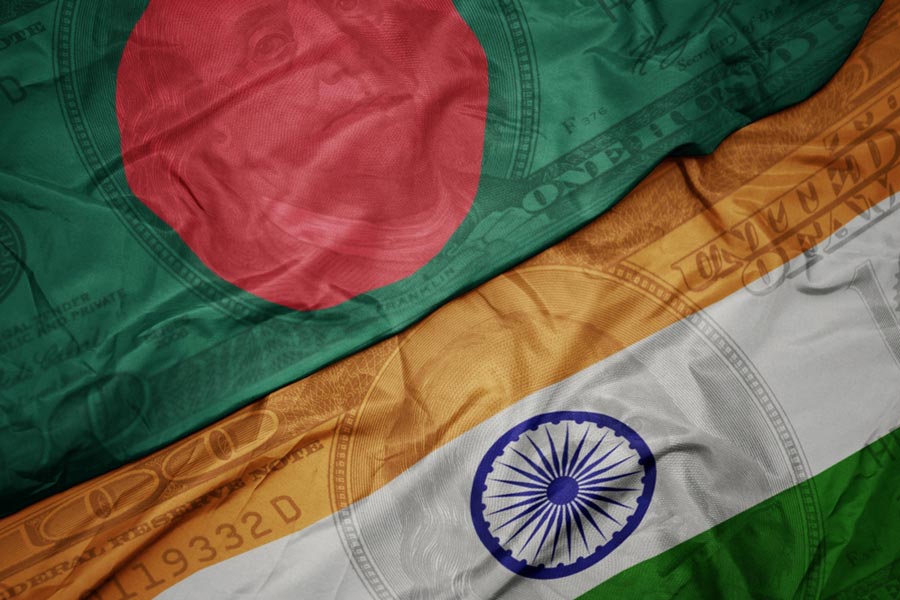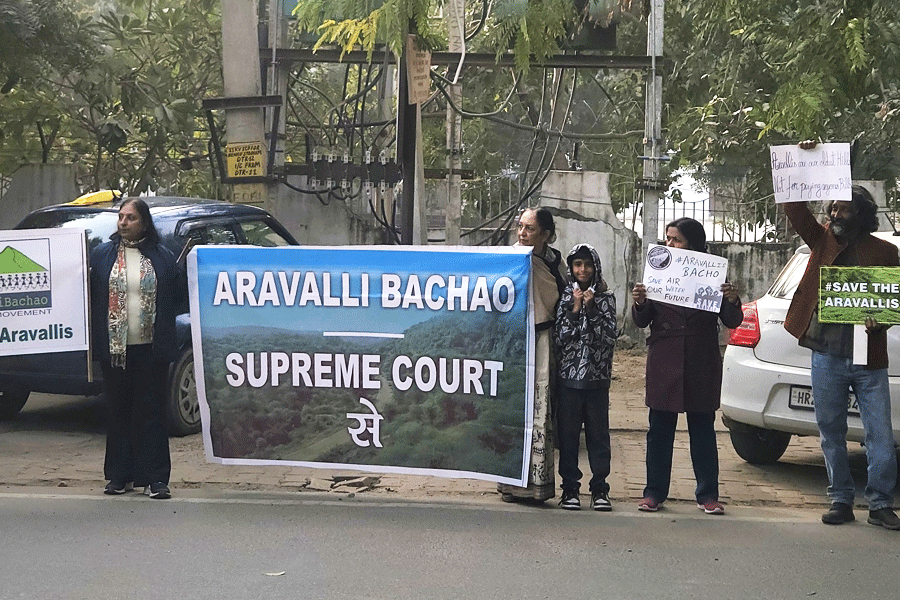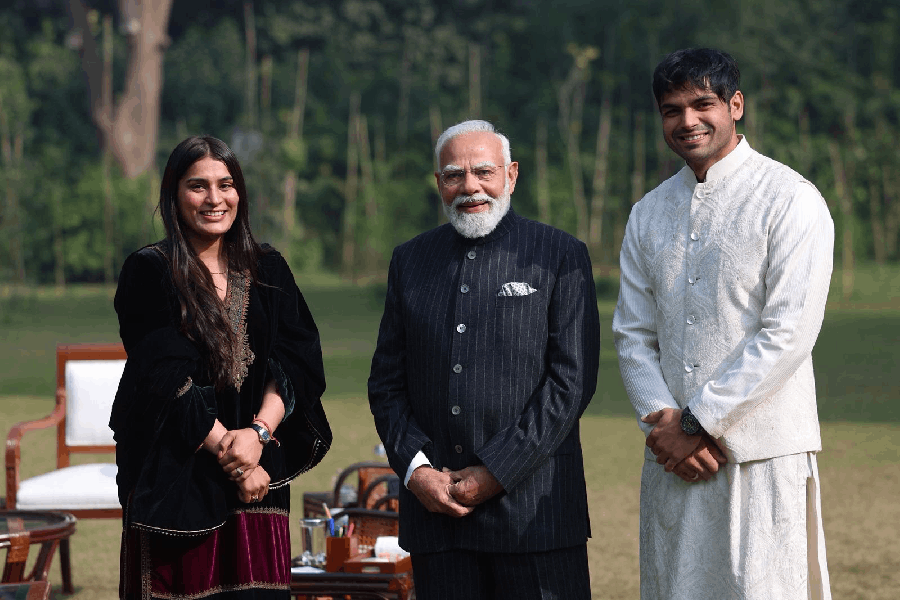|
|
| People first |
Engaging with India allows Pakistan to soften its international image as the nursery of Islamic terrorism and a nuclear proliferator. There is also growing domestic tension over the army operations in the Wana tribal area against al Qaida sympathizers. Both the Jamat-e-Islami and the Jamiat Ulema-e-Islami see General Pervez Musharraf targeting his own people at America’s behest. The human rights violations in Wana are indeed reminiscent of the colonial days —blockading villages, imposing community punishment and quarantining families.
The Shia-Sunni sectarian killings in Pakistan have become frequent and dramatic. A new front has also been opened in Sind by fundamentalists against the Muttahida Qaumi Movement, a staunch supporter of the Musharraf regime.
The mullahs of the Muttahida Majlis-e-Amal have been relentless that General Musharraf gives up his uniform. Musharraf’s attempt to institutionalize the political role of the military through the instrument of the National Security Council does not seem to be working. Under these circumstances, General Musharraf can hope to get some breathing space by showing that India has been engaged meaningfully on Kashmir.
However, the weak political arrangement that the General is engineering in Islamabad would ensure that there is no radical shift in his Kashmir policy. The new prime minister would not be able to sell any dramatic policy shift to the people. His selection is premised on his being even weaker than Mir Zafarullah Khan Jamali. The prime minister-designate, Shaukat Aziz, is a banker and a non-politico being catapulted to the top by the military.
While Manmohan Singh, because of the Congress party’s base, may be able to sell a shift in policy to the people, Shaukat Aziz would have no such luxury. Therefore, General Musharraf can only buy time on Kashmir rather than aggressively push for a settlement.
On the Indian side, the new government cannot be seen to be stalling the peace process. The Muslim vote and sentiment in India is linked to bettering ties with Pakistan. The international perception of India is also determined by how it deals with Pakistan. Vajpayee set a benchmark in carrying the relationship forward; Manmohan Singh cannot go below that.
India also cannot move beyond certain positions. There is no popular support for anything less than the line of control as the border.
Yet within these constraints there are some possibilities on Kashmir. Instead of putting geography and history first, the two sides could put the Kashmiris first and try to ease their daily existence. For this, the people-related demands would have to be accommodated. Such measures, however, also come with their downside.
A phased reduction in troops, without jeopardizing India’s security, has been considered in the past and rejected. It was rejected this time too, before the foreign secretary level talks in the last week of June. The army and the security agencies argue that despite the fencing of the LoC, infiltration has seen a spurt in June; the back of the Hizbul Mujahedin and Lashkar-e-Toiba is broken and they are on the run; and Pakistan has not dismantled the infrastructure of terrorism. A troop reduction under such circumstances would be ill-timed, they claim.
For troop reduction, Pakistan would have to stop state-sponsored cross-border terrorism. However, it is unlikely that Pakistan would turn off the tap on terrorism. Despite its negative domestic impact, jihad will remain in the armoury of the Pakistan establishment — its waxing or waning dependent on the progress in India-Pakistan talks.
A ceasefire with the militant groups, despite previous failures, could also ease the situation in Kashmir, and take the Indo-Pak dialogue forward. Within the ceasefire framework, safe passage could be provided to the foreign militants. They could go back to Pakistan and lead normal lives.
Such a ceasefire offer, however, has to come from the militants. A generalized ceasefire may not be possible, as the militant groups have no centralized command. A unilateral ceasefire by India is only likely to be used by the militants to regroup.
India also needs to expand the internal dialogue with the Kashmiris to include groups other than the Abbas Ansari-led Hurriyat. Simultaneously, the most important leader of the group, Mirwaiz Umer Farooq has to be given more political space. He can be shown that the dialogue with New Delhi is meaningful by meeting his demands for releasing political prisoners and improving the human rights situation.
Of the 3,000 odd political prisoners in Jammu and Kashmir, nearly 90 per cent are under the state’s Public Safety Act. To begin with, all those who have completed five years in prison ought to be released on bail or with police reporting requirements. Up to now only about a hundred political prisoners have been released. This process can be hastened.
The state government also has to make the review of administrative detention transparent and accessible. Earlier the courts designated for cases under the Terrorist and Disruptive Activities Act and Prevention of Terrorism Act were in the districts; they have now been shifted to Jammu. This creates problems for the families of the detainees.
There is already a perceptible improvement of the human rights situation in Jammu and Kashmir. A detailed review would help, as would the setting up of an effective monitoring mechanism.
There are also some bilateral measures possible to improve the quality of life of the Kashmiris. Pakistan is unwilling to allow a bus link on the Muzaffarabad to Srinagar route based on the passports of either side. Its argument is that if Pakistan stamps the Indian passports held by Kashmiris, they would in effect be conceding that they are Indian citizens. But equally, India would end up recognizing the residents of Pakistan-occupied Kashmir as Pakistani citizens.
As a counter, India has proposed another bus link — from Sialkot to Suchetgarh. This would be a Punjab (Pakistan) to Jammu and Kashmir route across the international border rather than a Kashmir (PoK) to Kashmir (Jammu and Kashmir) route. Even this is not acceptable to Pakistan.
The two sides, however, could take a lesson from history. Specific and limited travel documents for divided families have existed between India and the then East Pakistan (the erstwhile “East Pakistan passport”) and for the families of Tamil plantation labourers between India and Sri Lanka (the “India-Ceylone passport” created as a result of the Nehru-Bandaranaike Pact). Similar limited travel documents could be created to facilitate travel between the two Kashmirs. India ostensibly is not opposed to using documents other than passports for travel between the two countries but does not want them to be Kashmir-specific.
Pakistan has rejected all such proposals that it thinks are aimed at sanctifying the LoC as more than what its name signifies. Hence, its reluctance to accept trade across the LoC, joint promotion of tourism across it and even joint environmental studies of the impact of deforestation. Without prejudice to its stated position, Pakistan must show the willingness to move on these areas, as they would benefit the Kashmiris by starting a psychological, social and economic healing process.











